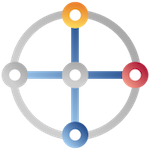Toolbox Portfolio

A brief introduction to benchmarking is provided here:
See also: http://en.wikipedia.org/wiki/Benchmarking
There are many types of benchmarks, e.g., product and technical, performance or functional benchmarks. The effort to produce benchmarks depends on the process applied and can be both time consuming and costly. Benchmarking often relies on qualitative judgments of experts due to the high effort required to collect or a lack of qualitative data.
EIDOS ideally supports the capturing of expert valuations and supports benchmarking analysis from different perspectives.
EIDOS provides two different templates and visualizations to support benchmarking. One can be applied in a workshop and the other template starts with feeding data from Excel and allows for the comprehensive analysis of the results after the import to the Visual Scoremap tool.

A Balanced Scorecard is both a framework and a concise report aimed at performance management (see also:
http://en.wikipedia.org/wiki/Balanced_scorecard
).
It typically comprises a mixture of quantitative and qualitative evaluations and data.
The Balance Scoremap is a unique visualization of qualitative and quantitative data and their changes over time in a single picture. It allows comparing different time perspectives and a zoom feature to review details or to maintain the overview in one big picture. A customized structure of a Scoremap is easily set-up by using the Goal Assessment tool; alternatively, the EMT also provides a template for a Strategy Map.
Note: The EIDOS Visual Scoremap tool and its associated visualization is protected by copyright.

KPIs are part of performance management. KPIs are quantifiable measures that a company or industry uses to gauge or compare performance in terms of meeting their strategic and operational goals. They vary between corporations and industries, depending on their priorities or performance criteria.
See also: http://en.wikipedia.org/wiki/Performance_indicator
EIDOS supports the development of KPI’s with the Goals Assessment (GA) module. It allows for the easy transfer of KPI data to the Visual Scoremap as a basis for the continuous monitoring and detailed analysis of progress made in the defined performance areas.

The Vision is the aspirational future state of the organization, and reflects the Board’s overarching aim in driving the organization forward towards the role they would like it to play!
The vision statement is a source of inspiration that articulates the dreams and hopes for a business or – in the case of public institutions – the future of a country or region or city. Whether for an organization or a public intuition, the vision statement answers the question, "Where do we want to go?" or “How does the world look like if we are successful”?

A mission statement is a statement of the purpose of a company, organization or institution and is a written declaration of its reason for existing or core purpose whose focus normally remains unchanged over time.
The mission has to be seen in the wider concept of Vision-Mission-Goals: A key principle is that strategy is the product of a rigorous process to define the most cost-effective means of applying scarce (human, financial, technological and other) resources to achieve a companies or organization’s goals. These [quantified and time-bound] goals must be rigorously derived from the organization’s Mission - its reason for existing - and must advance progress towards achievement of its empowering Vision.



